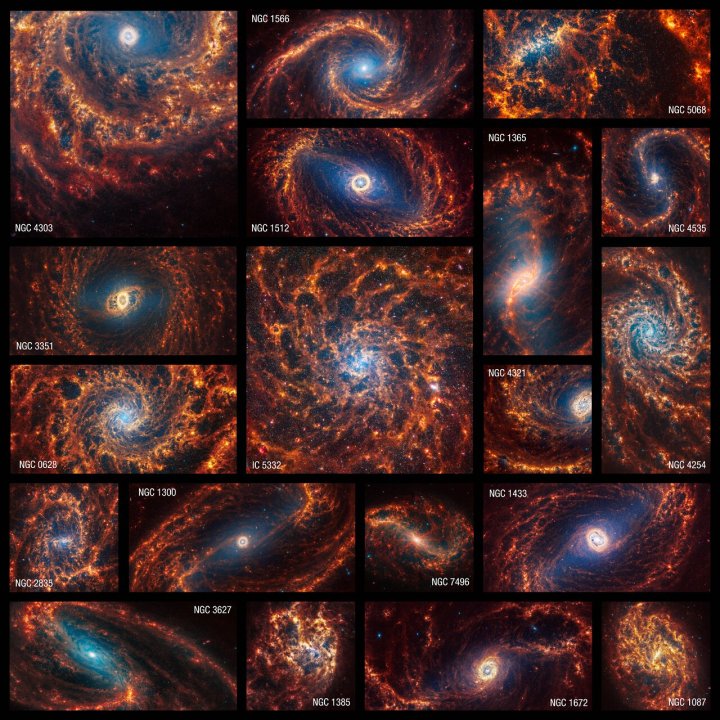A stunning new set of images from the James Webb Space Telescope illustrates the variety of forms that exist within spiral galaxies like our Milky Way. The collection of 19 images shows a selection of spiral galaxies seen from face-on in the near-infrared and mid-infrared wavelengths, highlighting the similarities and differences that exist across these majestic celestial objects.
“Webb’s new images are extraordinary,” said Janice Lee of the Space Telescope Science Institute, in a statement. “They’re mind-blowing even for researchers who have studied these same galaxies for decades. Bubbles and filaments are resolved down to the smallest scales ever observed, and tell a story about the star formation cycle.”

These images were collected as part of the Physics at High Angular resolution in Nearby GalaxieS (PHANGS) program, which includes data not only from Webb, but also from other telescopes like the Hubble Space Telescope, the Atacama Large Millimeter/submillimeter Array, and others. The aim of the project is to survey nearby galaxies to understand how stars form, and the Webb data adds information in the infrared wavelength to existing data in the ultraviolet, visible light, and radio wavelengths.
“Stars can live for billions or trillions of years,” said researcher Adam Leroy of the Ohio State University. “By precisely cataloging all types of stars, we can build a more reliable, holistic view of their life cycles.”
The full catalog of images, which you can see on the Webb Telescope website, show a number of interesting features. The spiral arms reaching out from the bright center are the defining feature of this type of galaxy. These arms show stars in blue and dust in red, and a notable feature in some is areas of spherical shells without dust, which are thought to have been created by stars that exploded and pushed away matter from their immediate environment.
Other areas of interest are the bright cores, with data suggesting that star formation begins at the core and spreads outward to the arms, so more stars that are more distant from the center are likely to be younger.
The researchers are also releasing a catalog of information on 100,000 star clusters, which they hope other researchers can make use of. “The amount of analysis that can be done with these images is vastly larger than anything our team could possibly handle,” said Erik Rosolowsky of the University of Alberta. “We’re excited to support the community so all researchers can contribute.”



